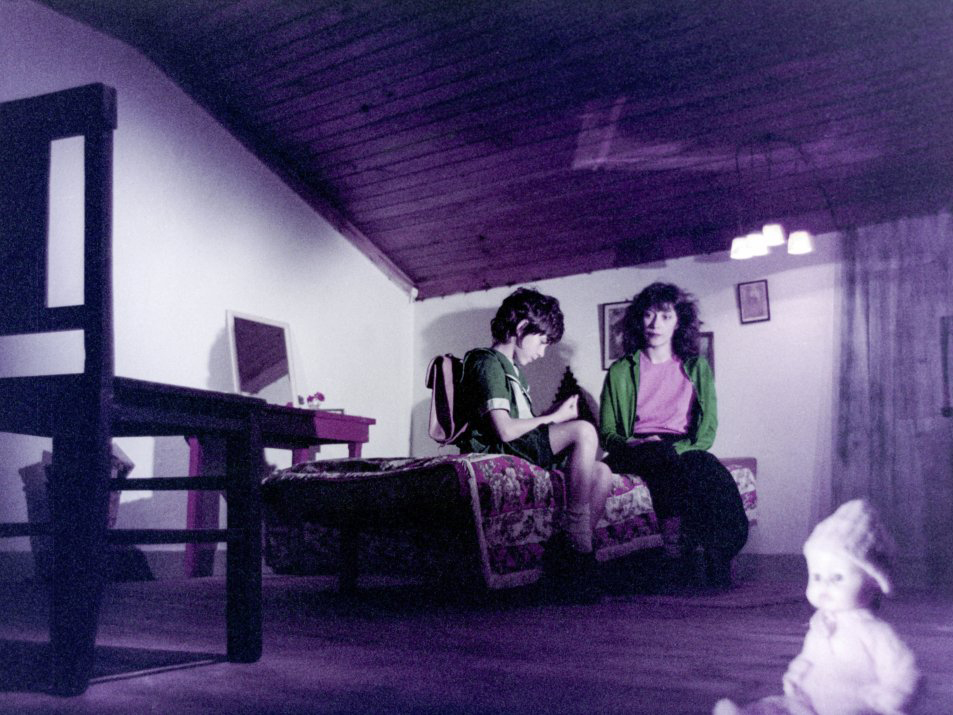
A surreal odyssey in which a melancholic maidservant crosses paths with a homicidal little boy, travels to a tiny island of pirates and encounters a man with multiple personalities.
EN
“In dreams, we find sequences and archetypal forms of montage that existed before cinema. The following montage: close-up / direction of the gaze / object seen by the person looking / that person’s reaction – already appears in dreams before the cinematic image. There is a kind of pleasurable incompleteness specific to both dream and cinema. For a long time, a distinction has been made between cinema as dream and cinema as memory. But in the case of cinema as memory, it is a mirror with the ability to remember; in the dream system, cinema precisely breaks the mirror. And yet we still search for a single image. As for me, I tend to mix the two and think that cinema functions both as a memory of the dream and as a mirror of events – by making them strange enough to tear them away from the mechanical nature of life, from representation, and restore to them a function of correspondence.’
Raúl Ruiz
“Raúl Ruiz’s City of Pirates is (de)composed under the sign of Surrealism, with its trust in ecstasy, scandal, the call of the wild, mystification, prophetic dreams, humour, the uncanny. Given the surprising swerves and disorientations evoking Buñuel and Dalí, and the confidence in a poetic discourse recalling Eluard and Péret, one wonders if Ruiz didn’t elaborate his scenario using the Surrealist mode of automatic writing. Troubled, graceful Isidore – Ducasse and Duncan? – is a purely Surrealist heroine, part Ophelia, Salomé, Bérénice, prone to trances, somnambulism, hysterical seizure, contact with the ‘other side’. Her calm violence links her to the real life murderesses – Germaine Berton, the Papin sisters – exalted by Breton’s circle, and by Jacques Lacan. Indeed, Lacan’s notion of a psychoanalysis in which the analyst stays off his patient’s wavelength, inspired by the idea of ‘surrealist dialogue’ in which paired monologues at cross purposes strike sparks of meaning off each other, underpins the scatty trajectory of Ruiz’s own graphomania, snared this time as the tale of a Pirate’s City.”
Paul Hammond1
- 1Paul Hammond, « City of Pirates. (La Ville des pirates, France/Portugal, 1983), » Rouge.
FR
« Il y a des films que nous ne sommes pas sûrs de ne pas avoirs rêvés. Ce sont peut-être les plus beaux. Telle cette nouvelle aventure du capitaine Ruiz au pays de nos croyances. » – Serge Daney1
« On trouve dans le rêve des séquences et des montages archétypiques qui existent avant le cinéma. Le montage suivant: gros plan/ direction du regard / objet vu par la personne qui regarde / réaction de cette personne se trouve déjà dans le rêve avant l’image cinématographique. Il y a une espèce d’incomplétude jouissante propre au rêve et au cinéma. Depuis longtemps, on fait une distinction entre le cinéma / rêve et le cinéma / mémoire. Mais dans le cas du cinéma mémoire il s’agit d’un miroir qui a la capacité de se souvenir; dans le système du rêve, le cinéma, justement, brise le miroir. Et on cherche tout de même une seule image. Quant à moi, j’ai plutôt tendance à mélanger les deux et à penser que le cinéma fonctionne comme une mémoire du rêve et comme un miroir des événements en les rendant suffisamment étranges pour les arracher à la mécanicité de la vie, à la représentation, et leur rendre une fonction de correspondance – j’utilise ici à nouveau les expressions de Swedenborg. »
Raúl Ruiz2

